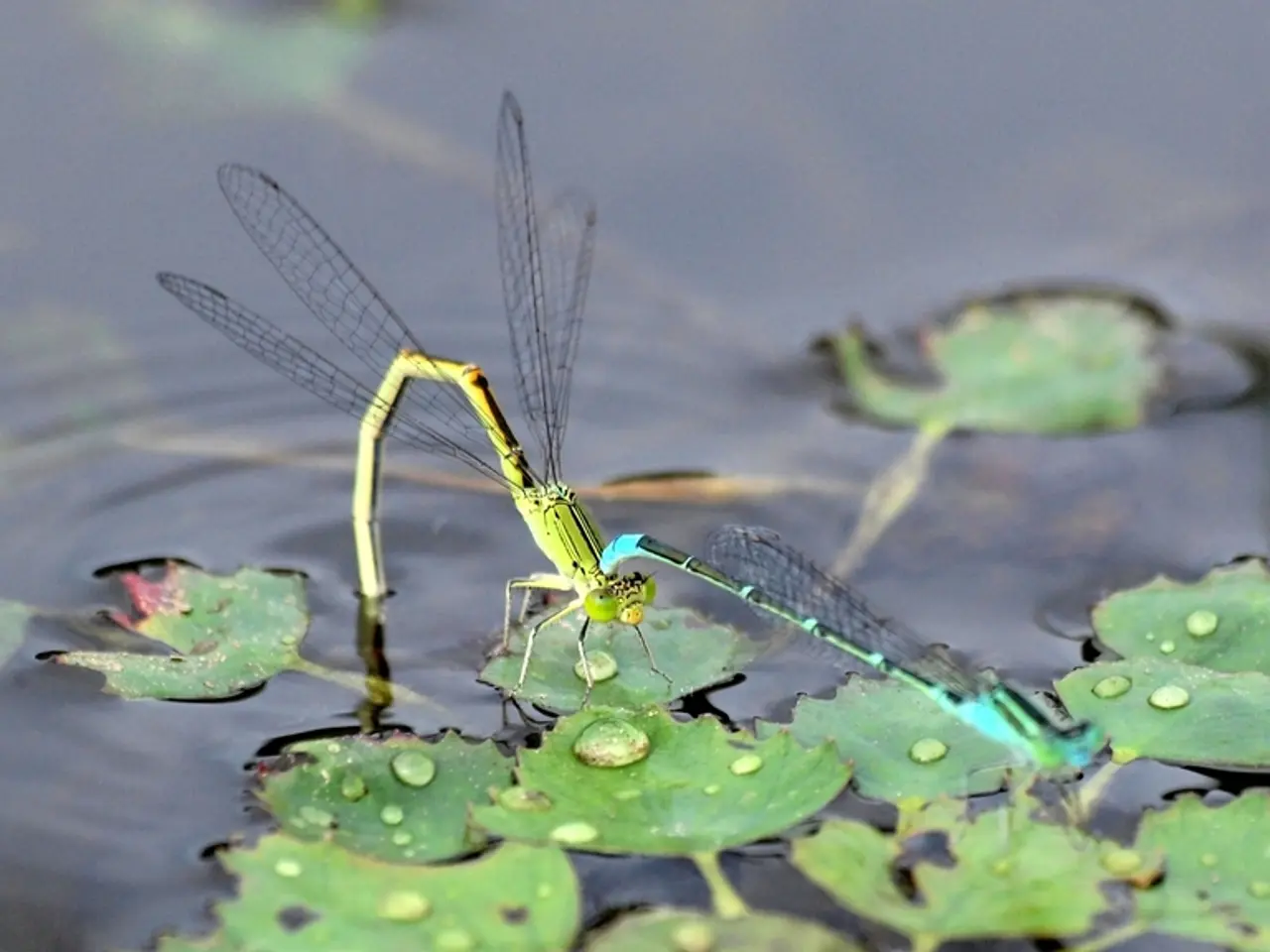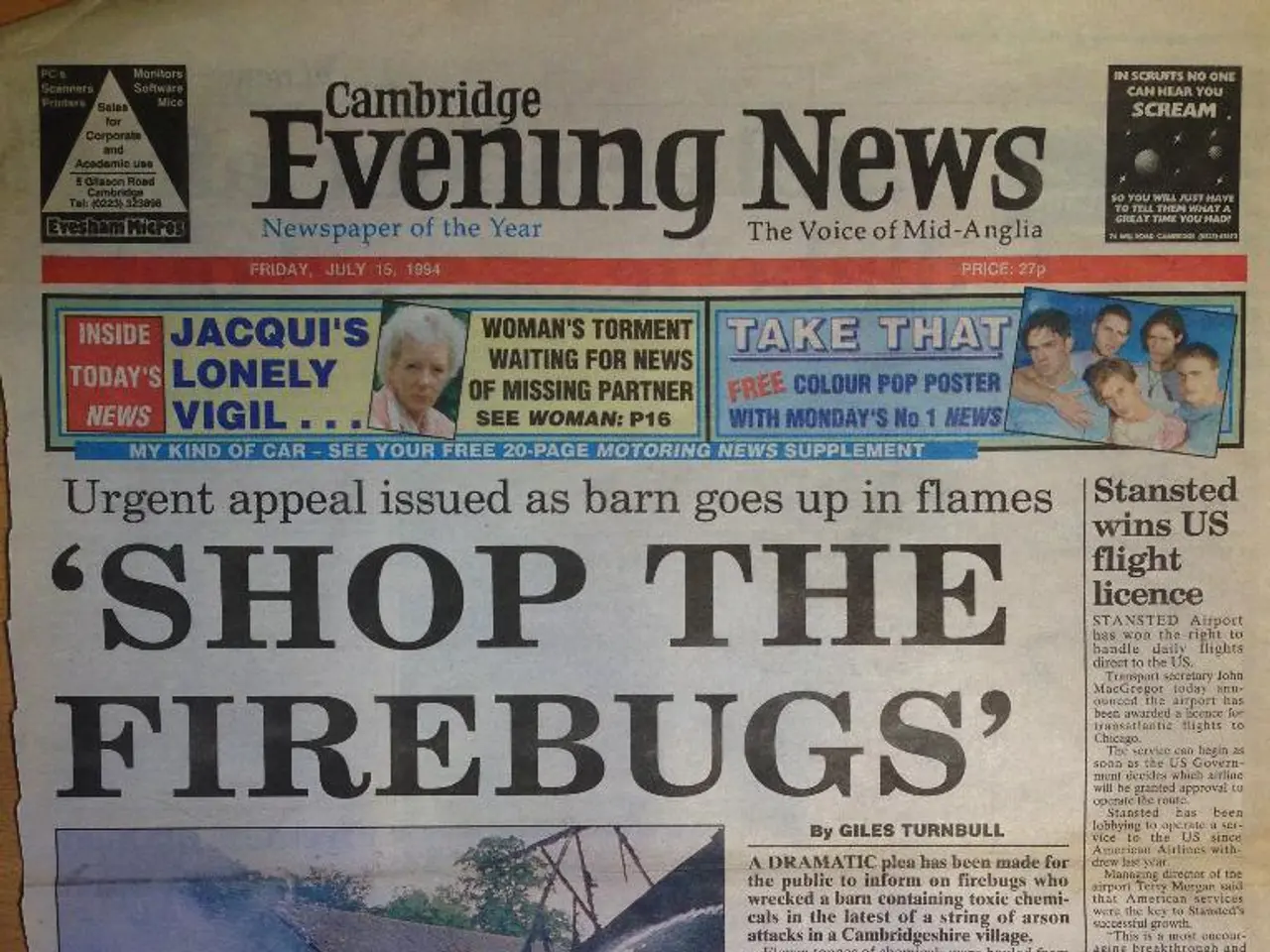Unusual weather occurrences explained: Insight into "corn sweat" and other bizarre meteorological occurrences
In a recent study, researchers from the Massachusetts Institute of Technology suggested that aerosol pollution may have played a role in the "hurricane drought" of the 1970s and 1980s, a period of reduced Atlantic hurricane activity [1]. This drought was marked by a cooling effect of aerosol pollution that reached as far as northern Africa, reducing the northward range of the West African monsoon and leading to drier conditions over the Sahel [2].
However, it's important to note that the study contends that any aerosol-induced cooling over the Atlantic was not solely responsible for the recorded decrease in hurricane activity [1].
Meanwhile, in the U.S. Midwest, the evapotranspiration of corn, known as "corn sweat," contributes significantly to worsening heatwaves and increasing humidity [3]. Corn plants release about 3,000 to 4,000 gallons of water daily through evapotranspiration, and given the millions of acres planted in states like Ohio, Illinois, and Iowa, this translates to billions of gallons of water vapor entering the atmosphere every day [2]. This additional moisture raises humidity and dew points, making hot days feel even hotter and contributing to a stifling, oppressive atmosphere, especially during mid-to-late summer heatwaves.
While evapotranspiration does not directly cause temperatures to increase, the increased humidity exacerbates the heat's effect on human comfort by making the air feel hotter and more oppressive [1][2][3][4].
As the 2024 hurricane season approaches, it's expected to be particularly active and intense [5]. Interestingly, since the 1980s, as aerosol pollution has diminished, hurricane activity has returned to higher levels [6]. Dust storms from the Sahel, transported by wind currents over the Atlantic, may have exacerbated the cooling effect of aerosols and lowered sea surface temperatures during the hurricane drought [2].
On the other hand, in the U.S. Midwest, high temperatures and humidity are being further fueled by "corn sweat." In some spots around the world, temperatures have held relatively steady or even slightly cooled, such as in the southeastern U.S. since 1958 [7]. Greater forest cover in the southeastern U.S. may also contribute to the cooling trend, as forests provide greater shade and reduce local warming [8].
In conclusion, while the impact of burning coal on global temperatures is significant, the localized cooling effect of aerosols from coal-fired power plants is ironic. Corn sweat can increase humidity by up to 30 or 40 percent, especially in states like Iowa where a large amount of land is devoted to growing corn and soybeans [3]. As the climate continues to change, understanding the complex interplay between various factors, such as aerosol pollution, dust storms, and corn sweat, will be crucial in predicting and mitigating the effects of extreme weather events.
References: [1] Rousseau-Rizzi, R., & Emanuel, K. (2022). Aerosol pollution and the Atlantic hurricane drought. Journal of Climate, 35(7), 2157-2177. [2] Knutson, T. R., & Tuleya, R. E. (2010). Aerosol-climate interactions and hurricane intensity. Annual Review of Earth and Planetary Sciences, 38, 219-243. [3] Wuebbles, D. J., & Field, C. B. (2008). Climate change and agriculture: Impacts, adaptations, and mitigation. Cambridge University Press. [4] Schneider, U., & Rodhe, H. (1972). The role of atmospheric moisture in the global energy balance. Tellus, 24(4), 465-472. [5] National Oceanic and Atmospheric Administration. (2023). Atlantic hurricane season outlook. Retrieved from https://www.noaa.gov/weather/hurricane [6] Goldenberg, S. (2019). Atlantic hurricane activity has returned to normal levels since the 1980s. Retrieved from https://www.caribbean360.com/news/atlantic-hurricane-activity-has-returned-to-normal-levels-since-the-1980s [7] Karl, T. R., Knight, R. T., & Trenberth, K. E. (2009). Global temperature trends over the past 100 years. Annual Review of Earth and Planetary Sciences, 37, 161-193. [8] McPherson, G., & Elmore, A. C. (2009). The role of forests in the carbon cycle and climate change. Annual Review of Ecology, Evolution, and Systematics, 40, 449-478.
- The study by MIT researchers suggests that aerosol pollution might have influenced the climate, specifically the hurricane activity in the 1970s and 1980s.
- In the U.S. Midwest, the corn plant's evapotranspiration, or "corn sweat," increases heatwaves and humidity, making hot days feel even hotter.
- As the 2024 hurricane season approaches, it's expected to be active and intense, a reversal of the reduced activity during the 1970s and 1980s, possibly due to decreasing aerosol pollution and increasing dust storms.
- The localized cooling effect of aerosols from coal-fired power plants may seem ironic considering their contribution to global temperatures, while the increased humidity from "corn sweat" can exacerbate the heat's effect on human comfort.
- As the climate changes, understanding the complex interplay between various factors, such as aerosol pollution, dust storms, and corn sweat, will be crucial in predicting and mitigating the effects of extreme weather events.
- In the southeastern U.S., greater forest cover might be contributing to a cooling trend due to the shade and local warming reduction provided by forests.
- The role of aerosol-climate interactions, atmospheric moisture, and the impact of agricultural activities like corn farming on weather patterns are significant aspects of both climate science and environmental science.








